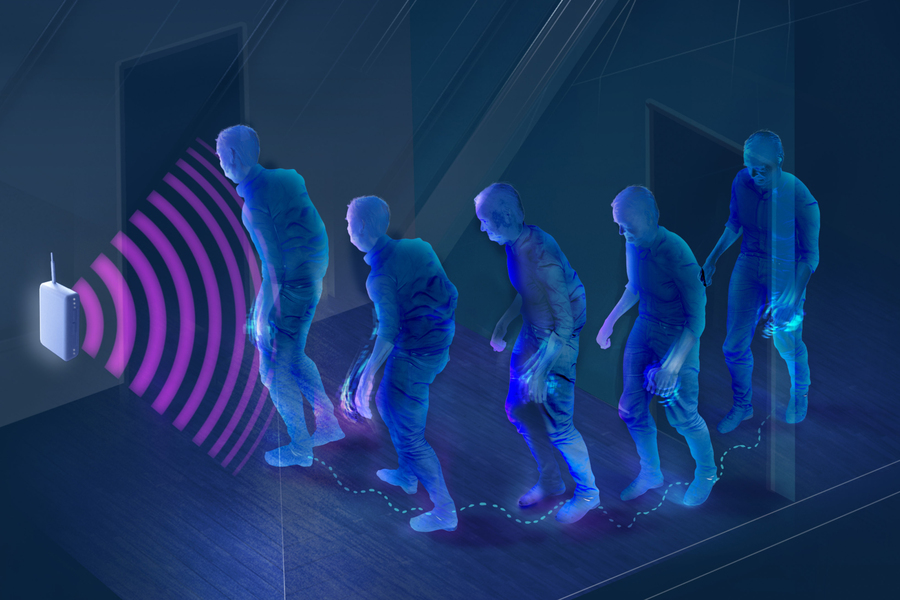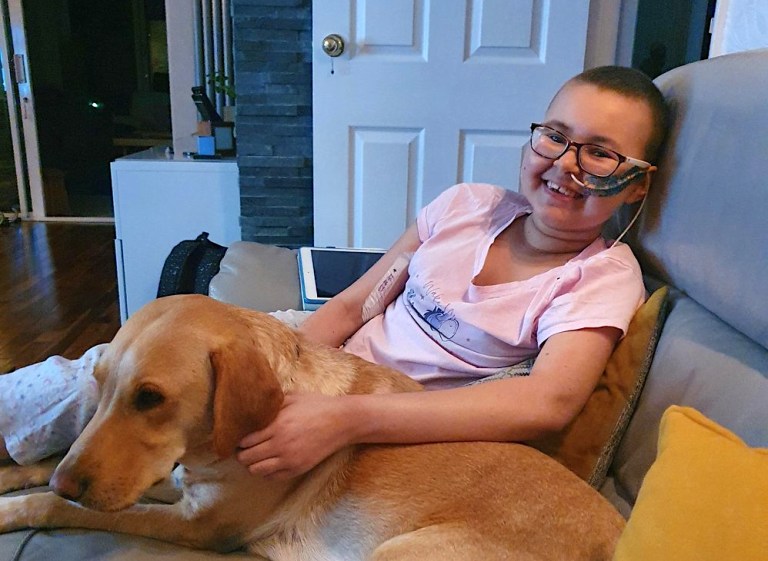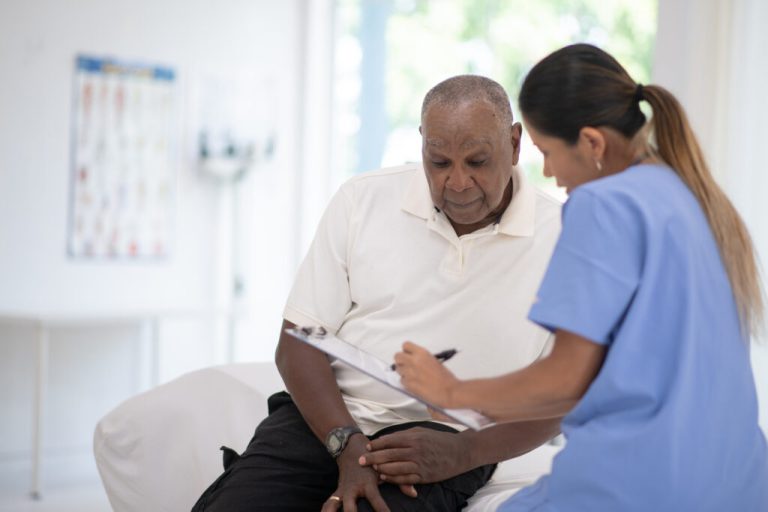Traveling to a doctor’s office can be arduous for people with Parkinson’s disease, a neurological condition that causes spontaneous, uncontrollable movements and cognitive challenges. But clinical monitoring is essential to track the disease’s progression and evaluate treatment efficacy. A new at-home monitoring system might provide a solution that’s not only more convenient but also more effective.
In a paper published in the journal Science Translational Medicine, researchers described how they used radio sensor devices to monitor patients’ movements and gait speeds — a key indicator of disease severity — as they went about their day. The yearlong, at-home study involved 34 participants with Parkinson’s and 16 without.
According to MIT News, the machine, which is about the size of a Wi-Fi router, passively gathers data using radio signals that reflect off the person’s body as they move nearby. Clinicians can then use machine-learning algorithms to analyze the information and track patients’ disease progression and medication response.
Enabling patients to remain in the comfort of their homes is immensely beneficial in and of itself. Assessing Parkinson’s disease usually requires lengthy appointments at a medical center, where clinicians test patients’ motor skills and cognitive functions. According to a previous study, more than 40% of people with Parkinson’s never receive treatment from a neurologist or Parkinson’s specialist, often because it’s too difficult to access such services.
Plus, researchers say at-home monitoring could make evaluations more accurate. Typical assessments are somewhat subjective and can be skewed by external factors, like a patient’s fatigue from travel or their inclination to act differently in an unusual circumstance. The machines provide a fuller, more precise picture of the patient’s condition.
“We can’t really ask patients to come to the clinic every day or every week,” Yingcheng Liu, a Ph.D. student at the Massachusetts Institute of Technology and the study’s co-lead author, told Popular Science. “This technology gives us the possibility to continuously monitor patients, and provide more objective assessments.”
And Liu’s study isn’t the only one to look to radio waves to help people with Parkinson’s — last month, a study published in Nature Medicine showed how radio signaling devices could detect and monitor the disease while patients are asleep.
Ray Dorsey, M.D., a professor of neurology and co-author of the Nature Medicine study, told the University of Rochester Medical Center that remote monitoring could be a “powerful tool.”
“I like to compare our understanding of Parkinson’s to a street lamp in the night; we only get a glimpse of the disease when patients visit the clinic,” he said. “Moreover, the methods we use to track the disease over time are subjective. As a result, we have a very limited insight into how Parkinson’s disease impacts people’s daily lives.”
Neurological disorders are the leading causes of disability globally, and Parkinson’s is the fastest-growing type, affecting more than 10 million people worldwide.
“This radio-wave sensor can enable more care (and research) to migrate from hospitals to the home where it is most desired and needed,” Dorsey told MIT. “Its potential is just beginning to be seen.”












